Rock climbing shoes are notorious for being worn incredibly small. Climbers have been known to brag about what size shoes they are able to squeeze their feet into. It should be obvious that this is not the healthiest of habits. So this got me wondering, are climbing shoes inherently bad for your feet or is it their tightness?
As a general rule, climbing shoes are not typically bad for your feet unless they are worn excessively tight. Excessively tight climbing shoes can cause both acute and chronic foot injuries. Wearing proper fitting climbing shoes will help mitigate the potential for foot injuries.
Several studies have been conducted which analyzed both the short and long term problems caused by tight climbing shoes. It is important to know exactly what you are getting your feet into when wearing excessively tight climbing shoes. In addition to this, there are some very practical ways to help prevent foot problems from arising due to climbing shoes.
If you are interested in seeing what the current prices are for the most popular rock climbing shoes, you can find them on Amazon by clicking here. Using the Amazon affiliate link above and/or other links in the article helps support this website.
Foot Problems Caused by Excessively Tight Climbing Shoes
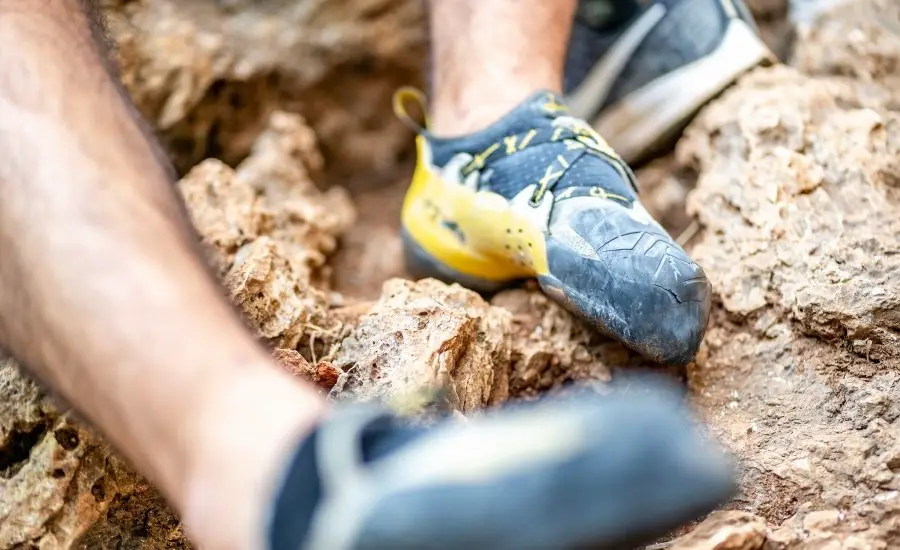
A study conducted by R.D. McHenry titled “Footwear in rock climbing: Current practice” is available online via sciencedirect.com. The study investigated the average climbing shoe size of experienced climbers and evaluated if potential problems could arise from it.
Of the 56 climbers analyzed, 55 of them were found to be wearing “excessively tight footwear” (average shoe size reduction of 4 UK shoe sizes) and 91% of them reported foot pain during activity.
Wearing excessively tight shoes in general is not fantastic for your feet. Climbing shoes in particular are terrible to wear too tight due to their shape.
Climbing shoes scrunch and force all of the toes together to act like a singular unit. While this enhances the climber’s ability, it also places an incredible amount of stress and strain on the toe joints. In addition to this, their shape forces the heel and arch to absorb the force of impacts instead of the toes and ball of the foot. Again, increasing the likelihood of sustaining a foot injury.
Potential Acute and Chronic Foot Problems and Injuries
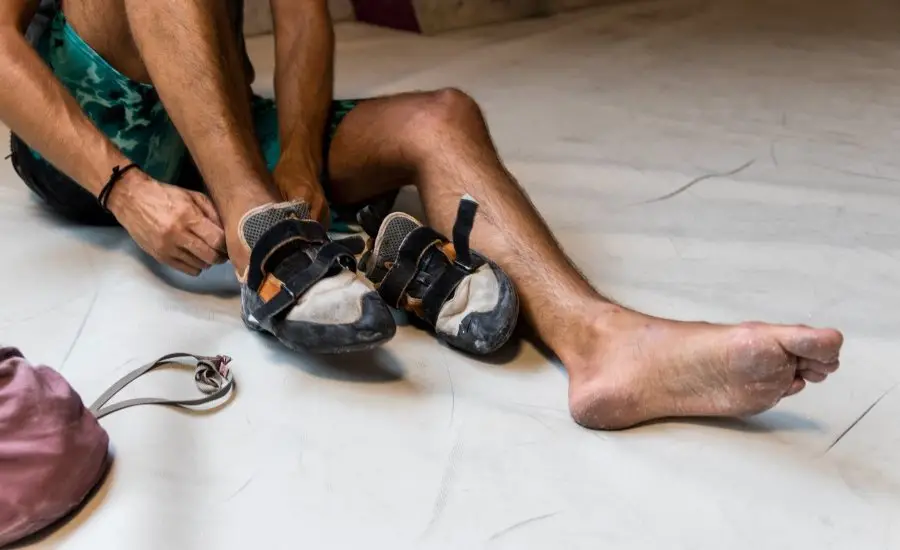
A study conducted by Patrick Peters MD titled “Orthopedic Problems in Sport Climbing” is available online via sciencedirect.com. The study analyzed the orthopedic problems (injuries, overuse syndromes, and fractures) resulting from sport climbing.
“Climbing shoes are supposed to fit like a second skin. To obtain this fit, nearly 90% of climbers accept pain during and after climbing. The small shoes also induce specific foot deformities as well as musculoskeletal, neurologic, and dermatologic problems.”
Patrick Peters MD, 2001, “Orthopedic Problems in Sport Climbing” published in Wilderness and Environmental Medicine Volume 12, Issue 2, accessed via sciencedirect.com
Below is a list of common injuries and foot problems identified in the study that are more likely to develop due wearing tight climbing shoes:
- Hallux Valgus (bunion on the big toe joint)
- Increased pressure in the toe joints, top of the foot, and achilles tendon insertion.
- Toe nail pain and soreness
- Subungual hematomas (Bleeding underneath toenails)
- Dystrophic toenails (misshapen, thickened, or have a partially destroyed nail plate)
- Toenail infections
- Increased pressure on deeper nerves, vessels, and soft tissue structures in the toes and foot
- Ankle sprains
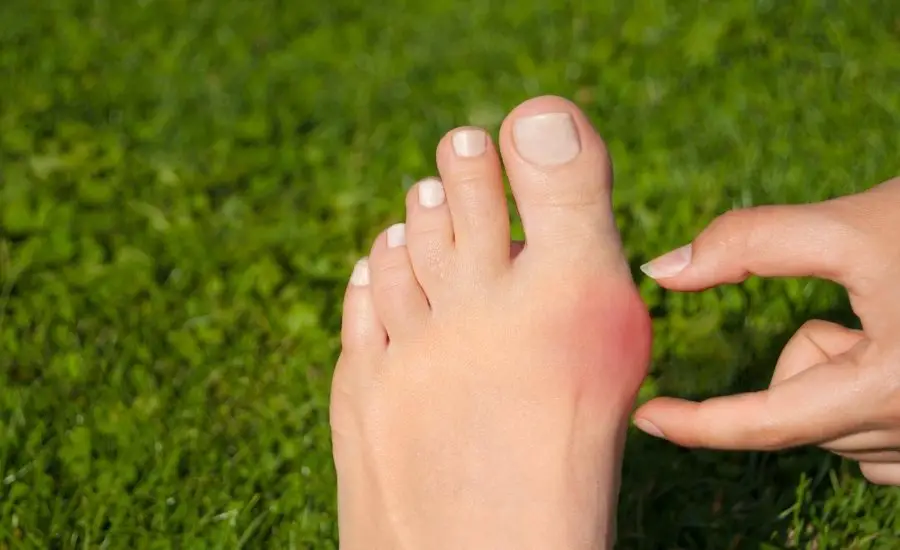
In addition to the injuries identified in the study referenced above, tight climbing shoes have also been found to increase the likelihood of sustaining the following:
- Corns
- Calluses and Blisters
- Hallux rigidus (Big toe joint stiffness)
As you can see, there is a laundry list of potential toe, foot, and ankle problems that arise from wearing improper fitting climbing shoes.
Tips to Mitigate Potential Issues Caused by Climbing Shoes
Although the shape and nature of climbing shoes automatically increase the risk of climbers developing foot problems, there are a few ways to help reduce the chance of them developing. Three of these methods are described below.
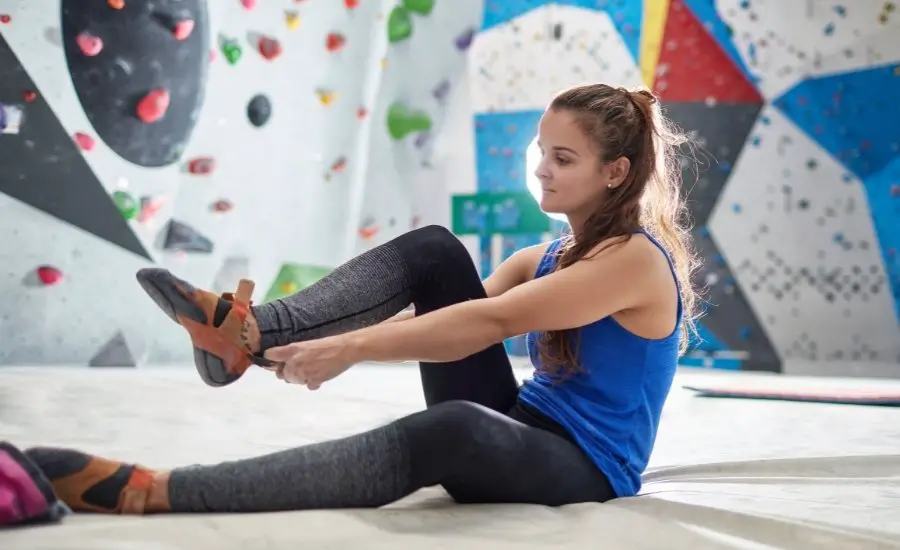
Wear Larger Climbing Shoes
The main injuries and issues caused by climbing shoes result from wearing them too tight. Now I know wearing larger shoes goes against popular climbing sentiment, but hear me out.
I still recommend wearing shoes that are tight, just not too tight. If you are having a lot of pain when wearing your shoes then they are too tight. Getting shoes that fit correctly will keep them snug to your feet but not be painful.
In fact, I recommend that beginners wear even looser shoes than intermediate and advanced climbers. Beginners should be more focused on improving their overall climbing technique and ability. Wearing incredibly tight shoes will not help them and will most likely cause them more trouble than good.
For intermediate and advanced climbers, shoe fit will be more important. I recommend re-evaluating how tight of shoes you actually need. Based on the studies above, your shoes are likely too small.
Take Off Your Shoes When Not Climbing
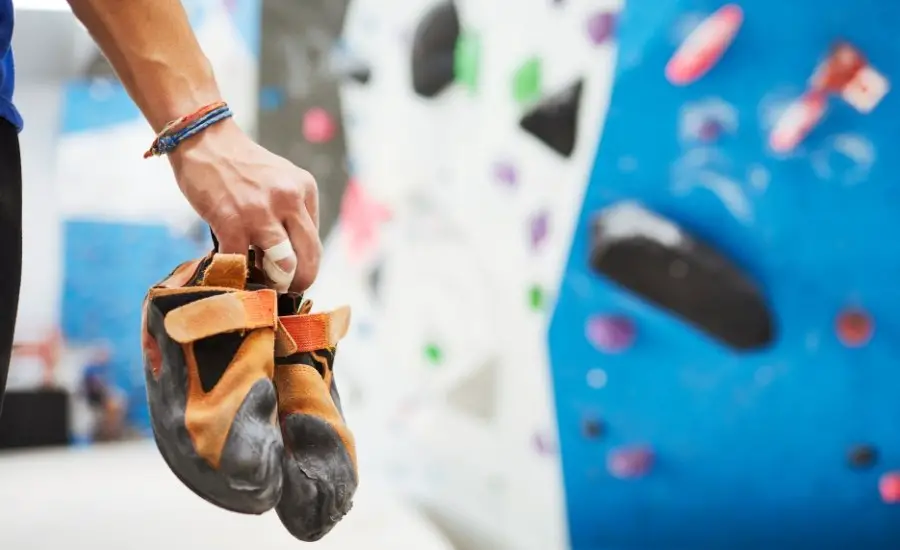
Taking your climbing shoes off when you are not actively climbing is a great way to relieve the pressure put on your feet. The climbing shoe shape itself forces all of your toes into a point and adds a lot of stress to the big toe joint.
Minimizing the amount of time your toes are scrunched in that position will help prevent issues from developing. On top of this, it will give your feet a much needed break and let them air out. Sweating too much in climbing shoes can make them pretty gross pretty quick. The stench alone will prevent you from making friends at the gym.
Taking your shoes off your feet will help keep the sweat down to a minimum. In fact, I wrote an entire article with 9 additional ways to keep your feet from sweating too much in your climbing shoes. If you’re sick of all that foot sweat and stench, check it out here.
Clean Your Climbing Shoes
Cleaning your climbing shoes will help prevent the chances of getting foot fungus. On top of this, it will help get rid of that awful smell your shoes are sure to have by now. There are a lot of different ways to clean your shoes and I will not go into great detail about them here.
What most cleaning methods don’t include however is a way to dry them out quickly after you wash them. If you want to be climbing in dry climbing shoes during your next session I highly recommend checking out my article on the fastest way to dry them. It walks you through it step-by-step.
